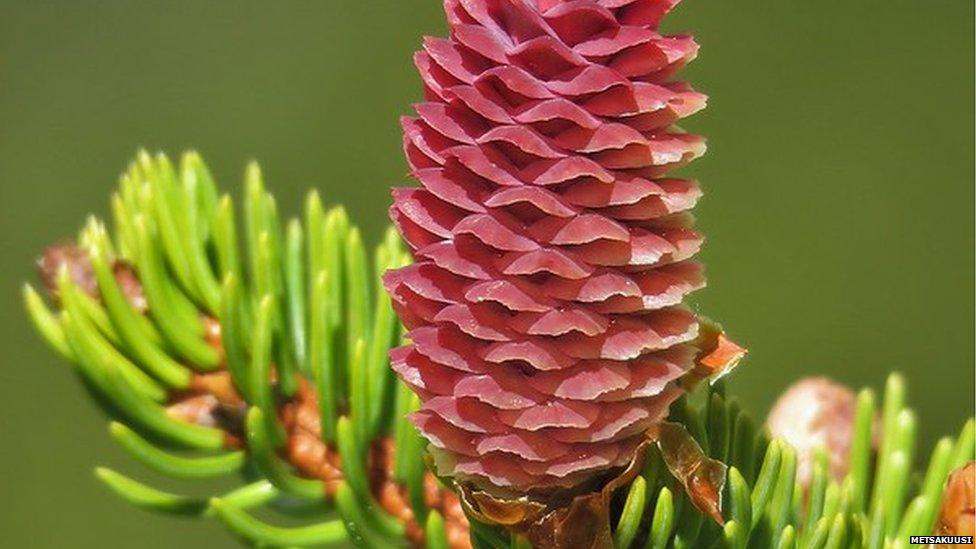Scientists unlock Alpine trees' molecular defence
- Published

Alpine regions are coming under increasing pressure from pests and pathogens
Researchers have found a way to tackle a disease that threatens thousands of hectares of Alpine forests each year.
Needle bladder rust causes Norway spruce needles to yellow and fall out, causing a significant reduction in growth.
Scientists in Austria have unlocked a natural defence mechanism that the species can use to fend off the potentially fatal pathogen.
The findings have been published in the BMC Genomics journal.
Disease is one of the major threats facing trees around the globe, especially in a warming world where many organisms are finding themselves living in an environment in which they are under increasing levels of stress.
It is widely predicted that invasive pathogens, and the insects that can spread them, are expected to thrive in a world experiencing climate change.
In evolutionary terms, harmful pathogens developed alongside plants' attempts to protect themselves, creating a multi-millennia cold war between biological kingdoms.
It is a natural defence mechanism that a team of scientists utilised to create a system to protect the Norway spruce from needle bladder rust.
Tree selection
"Our research seeks to curb this disease unravelling the molecular defence mechanism of Norway spruce against needle bladder rust infection," explained co-author Carlos Trujillo Moya, a researcher from the Austrian Research Centre for Forests.
Dr Trujillo Moya and colleagues have continued to monitor Norway spruce trees in the mountains of Austria, allowing the team to select trees that seem to display a resistance to the disease.
From these trees, the team were able to generate clones and then study the genes, as well as studying the production of defence chemical compounds.

A new generation of bladder needle rust-resistant spruce trees could limit the spread of the damaging pathogen
Dr Trujillo Moya told BBC News that trees that displayed a resistance to the needle bladder rust defended themselves via a "hypersensitive response".
"This defence mechanism consists in the production of a complex artillery of proteins and chemical compounds that isolate the fungus in the attacked leaves," he explained.
"The infected part of the leaf dies in a controlled way and thus prevents the fungus from spreading throughout the rest of the tree.
"This response occurs two to three weeks after the infection and lasts for at least one month."
The team said the findings represented "enormous progress" in the way Norway spruce trees are selected for their resistance to the needle baller rust pathogen (Chrysomyxa rhododendron).
"Our finding allows to better identify resistant clones and promote the establishment of replanting programmes by using selected trees, based on most effective hypersensitive defence reponse," Dr Trujillo Moya observed.
He concluded by saying this research helps tackle one of the main issues facing the ecological and economic sustainability of Alpine ecosystems.